Wireless mobility moves the bar higher
Building on faster, more robust communications networks, wireless devices from handheld terminals to autonomous mobile robots are on a path to increasing operational efficiencies, regardless of workforce challenges.
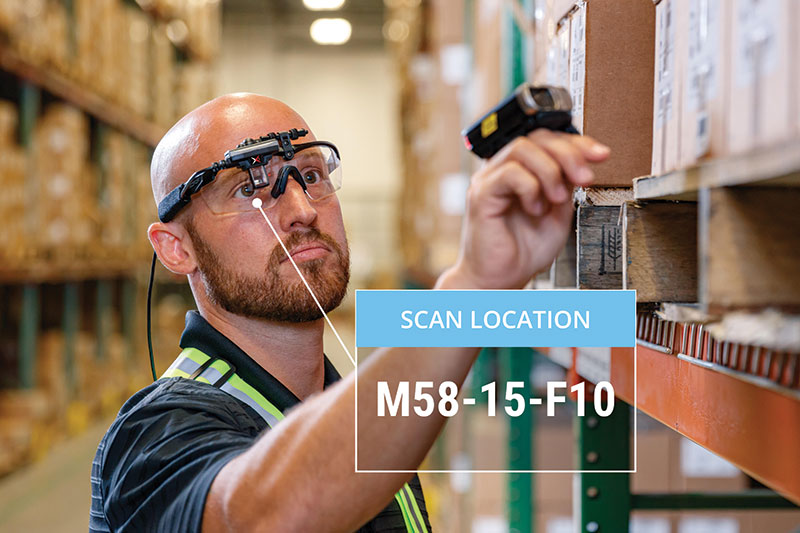
In a weird way, it’s probably a good thing that we can’t see all the wireless communications spanning distribution centers and manufacturing floors. Seeing all those communication paths and the data flying along them would probably confuse, if not mesmerize us. It’s so much better that we can only see the mobile terminals, tablets, computers and other wireless devices sending and receiving that data.
At the same time, it’s clear from discussions with several leaders in wireless communications that there’s no single, static approach here. Instead, a broad level of change is underway that seems certain to speed communications, make them more reliable and build networks able to handle the number of mobile devices and data loads much beyond current levels—and not a moment too soon.
Setting a baseline
We are all familiar with the pressures on the supply chain within the four walls from an undersized labor force to oversized consumer expectations. And Covid has not made any of this any easier.
Meanwhile, there has never been more pressure to have internal processes live in real time, just like life outside the four walls. In fact, you can probably forget there are walls anywhere, explains Glenn Lundgren, U.S. regional manager at JLT Mobile Computers.
“There’s little if any distance anymore between the consumer’s desires and distribution activities. We all want to—in real time—find an item, order and pay for it easily and quickly, and know when it’s being fulfilled and shipped. Also, don’t forget to tell me when it will arrive,” says Lundgren.
“All those requirements create a huge load on devices and wireless infrastructures in facilities even though many of those steps happen outside the four walls. But the basic information has to be available for the customer experience. That requires a link between wireless devices and enterprise systems. We’re more interconnected than we even realize,” Lundgren adds.
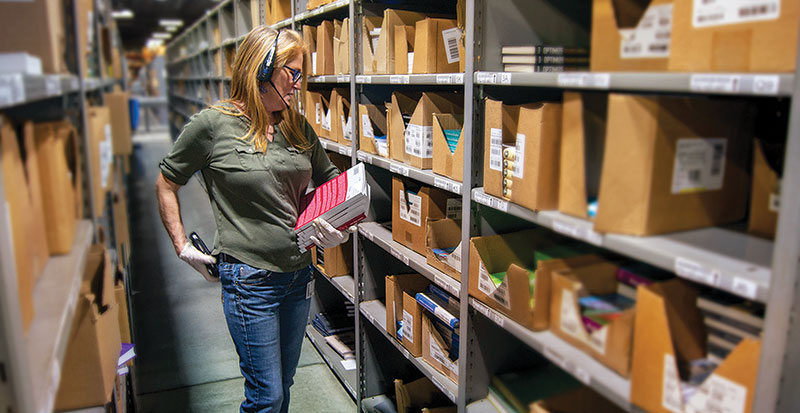
That interconnectedness is greatly amplified from inventory availability and its placement to worker availability and their placement. Wireless figures prominently in the battle to shrink travel paths and simplify processes whenever possible. Not to mention order fulfillment speed.
“We’ve got to be labor friendly in workflows and how we deploy technology,” says Mark Wheeler, Zebra’s director of supply chain solutions. “Wireless mobility is critical to both. The idea in general is to reduce travel time and improve efficiency. And the gains can result in return on investment of less than a year. It’s very old world to think of a 10% improvement as a legitimate goal,” he adds.
Nowhere does that apply more than to autonomous mobile robots (AMRs), which have entered the conversation lately, explains Wheeler.
At the same time, AMRs have their own wireless connectivity requirements. So, their introduction is putting still more traffic on what might already be overburdened networks.
Key considerations include the current load on the network and the applications already running on it says Venkatesh Ramakrishnan, head of logistics vertical, enterprise sales at Nokia. As he explains, a smart warehouse or the factory of the future requires a wireless network that delivers better performance across multiple dimensions including indoor and outdoor coverage area, reliability and latency (or delay) in network response time. All of these are critical measures of a wireless network’s effectiveness.
When all is said and done, speed, capacity and network resiliency are key priorities for mobile wireless suppliers, says Lundgren.
Rapid change
“Change is coming to data networks and devices fast and furious,” says Marcus Logan, director of offering management for software at Honeywell.
Let’s start with data networks. Several options are available here including upgrades of 802.11 Wi-Fi, 4G and 5G private networks and Cloud as well as Bluetooth.
As you may already know firsthand, Wi-Fi connectivity does not have the best reputation. Some of the issues are fixed structures such as racks and moving objects such as lift trucks. Both, and many other types of equipment not to mention inventory, can impede 802.11 signals.
On the Wi-Fi front, both versions 6 and 6E are now available, and in the early days of installation and usage, says Scot Stelter, director of offering management for hardware at Honeywell. He says these new versions offer a six-fold increase in reliability and speed compared to the previous Wi-Fi 5 generation.
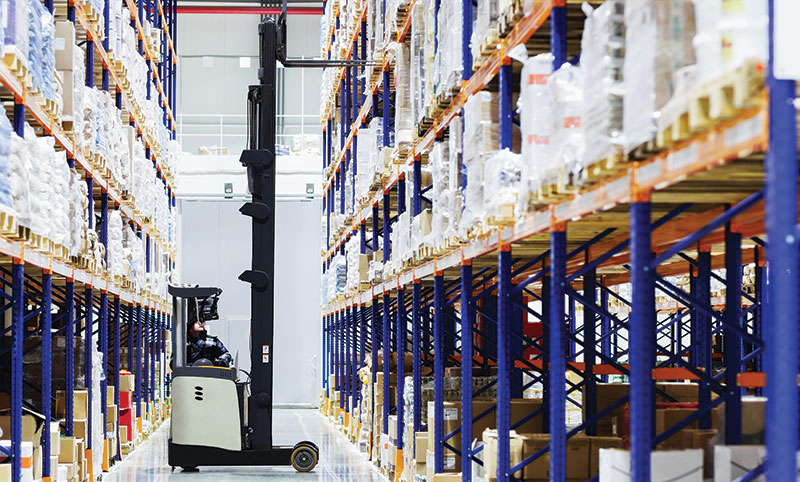
Stelter explains that Honeywell released a first-in-the-industry rugged handheld device last July with Wi-Fi 6 capability. It is Android based, ensuring future compatibility with the recent shift away from Windows-driven mobile tablets in the plant and warehouse.
Another approach here is to consider a 4G/LTE or 5G private network. According to Wheeler at Zebra, 5G in particular delivers speeds equivalent to wired internet. Bandwidth of 5G is considerably greater than 4G/LTE, supporting 100 times the number of devices.
A Nokia white paper explains that “virtually all digital technologies require robust, reliable and predictable connectivity to connect tablets, sensors, robots and personnel to Cloud-based software systems that analyze and optimize the end-to-end workflow… Both 4.9G/LTE and 5G support high bandwidth applications now served by Wi-Fi, but also support high-speed mobility and are more reliable and provide better coverage than Wi-Fi.”
Ramakrishnan says 4G and 5G private wireless networks, unlike Wi-Fi, have a core network that manages and operates the entire network. A mobile gateway performs user data traffic processing and ensures high quality of service across many devices.
Nokia’s Digital Automation Cloud is such a plug-and-play wireless network that supports both 4.9G and 5G. Ramakrishnan says more than 340 of these private networks are installed across the world with about 50 of them in warehouses and distribution centers.
A wide range of mobile (SIM based) industrial devices and equipment is now available. Only authorized devices can access the private 4G and 5G networks, ensuring the security and protection of business data, he adds.
There’s also the matter of Bluetooth for device-to-device communication in a narrow range. The latest versions here are 5.1 and 5.2.
A leading value of the enhanced Bluetooth technology is improved location of the devices, especially when they are misplaced behind a pallet rack, for instance. That, combined with Cloud software to track the condition of the device and its operational functionality, marks a transition to a more effective device management out on the floor, says Honeywell’s Logan.
The story in wireless devices
Talk about wireless devices in the warehouse and handheld terminals or computers typically come to mind. But we are now entering a stage where devices as diverse as wireless glasses and AMRs are part of the mix.
Beyond the points already made about changes in traditional handheld devices, here are a couple of others worth noting.
For the most part, Windows-based terminals have been displaced by ones running Android due to Microsoft’s departure from the market. The conversion is not yet complete, however, explains Mitch Rogers, director of sales at Lexicon Tech Solutions. Vehicle-mounted computers and tablets are the final frontier for Android.
That said, the next major shift in these devices is just getting underway. That’s the move from key-based terminals to ones with touchscreens. As several of the experts in this article said, the shift to a younger warehouse worker is a strong motivator in this shift. Quite simply, touchscreens are what this future segment of the warehouse is used to using from their smart phones to their tablets.
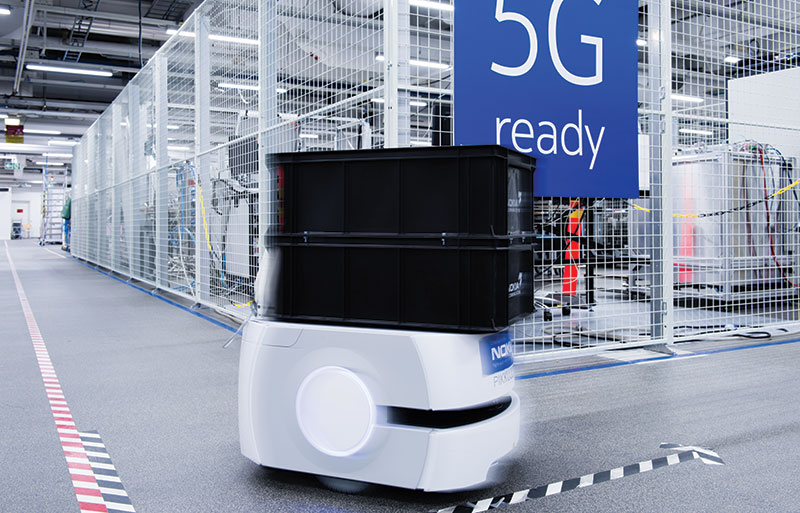
One recent addition from JLT merges both Android and touchscreen in a rugged vehicle-mounted computer. As Lundgren explains, the device connects to all wireless infrastructures. In addition, the virtually unbreakable display is responsive to users with gloves even in wet environments, making it highly versatile in tough conditions.
At least two other shifts away from devices with keyboards can be seen in wireless, too. One is voice, which has been around for a while. The other is wireless glasses, which are making another run at warehousing and distribution. Both are hands free because they use other human senses (voice and sight) to direct worker activities.
The plug-and-play ruggedized glasses combine a camera-based, heads-up display from Six15, says Bahar Wadia, chief business officer. Lexicon paired its new rugged Android handheld with Six15’s glasses to increase worker productivity, says Rogers. Wireless communication is by Wi-Fi. Beyond picking, says Wadia, the glasses can be used to direct maintenance supervised by a remote person.
Advanced software is the key to advancing well-established voice systems, says Justin Ritter, Lucas’ vice president of operations and customer success. “A voice interface by itself is relatively commoditized at this point,” says Lucas. “However, the differentiator in advanced wireless voice systems is the software that adds smarts.”
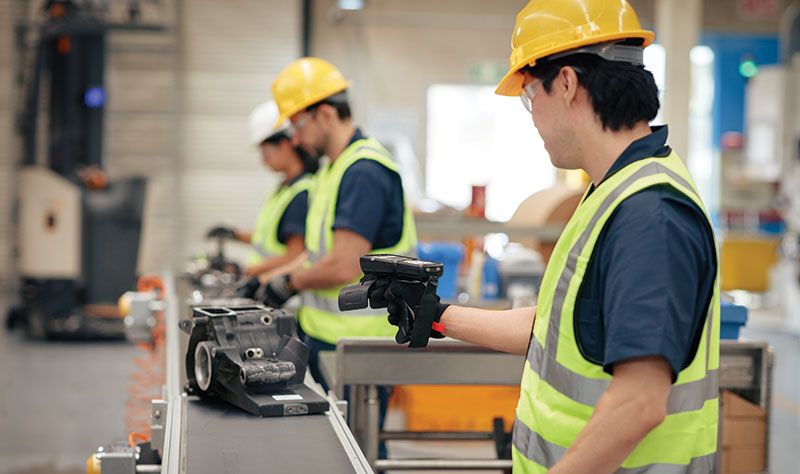
The most recent advance here from Lucas is a dynamic work optimization tool driven by artificial intelligence. The value, says Ritter, is development of dynamic travel paths that reduce distances covered by workers, optimizing picking transactions in the DC while trimming wear and tear on people. “It’s all about getting more done with fewer people,” says Ritter.
Going back to AMRs mentioned earlier, Lucas has also teamed up with Zebra to build a voice-directed collaboration between workers and robots. The idea, explains Zebra’s Wheeler, is to orchestrate the movement of both people and robots to minimize dwell time and improve accuracy at the picking location while significantly reducing human travel time. It combines Lucas’ AI optimization tool with Zebra’s AMRs, says Ritter. By all indications, this is merely one of the many pioneering efforts to bring AMRs into the mainstream of wireless devices that optimize warehouse activities in the future.
And when it comes to wireless mobility, the operational word is definitely “future.” By all indications, seemingly continuous improvements in communication technology will reward DC managers with increasingly worker-friendly scenarios.

Article Topics
Wireless News & Resources
Wiferion enters North American market Wireless Mobility: Ready for the next leg up Unchain Your Supply Chain: Reduce Risk and Boost Profitability with Wireless Charging Wireless Charging for the Materials Handling Industry? Wireless mobility moves the bar higher Warehouse automation accelerated with private wireless networks 5G: Supply chains are transforming faster than you think More WirelessLatest in Materials Handling
Registration open for Pack Expo International 2024 Walmart chooses Swisslog AS/RS and software for third milk processing facility NetLogistik partners with Vuzix subsidiary Moviynt to offer mobility solutions for warehouses Materials Handling Robotics: The new world of heterogeneous robotic integration BSLBATT is looking for new distributors and resellers worldwide Lucas Watson appointed CSO for Körber’s Parcel Logistics business in North America Hyster recognizes Dealers of Distinction for 2023 More Materials HandlingAbout the Author
Subscribe to Materials Handling Magazine

Find out what the world's most innovative companies are doing to improve productivity in their plants and distribution centers.
Start your FREE subscription today.
April 2024 Modern Materials Handling

Latest Resources











